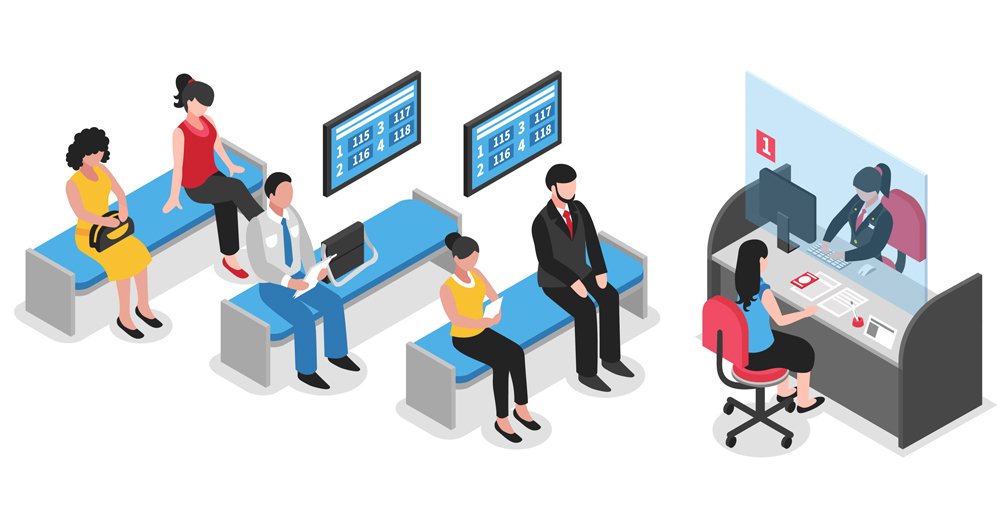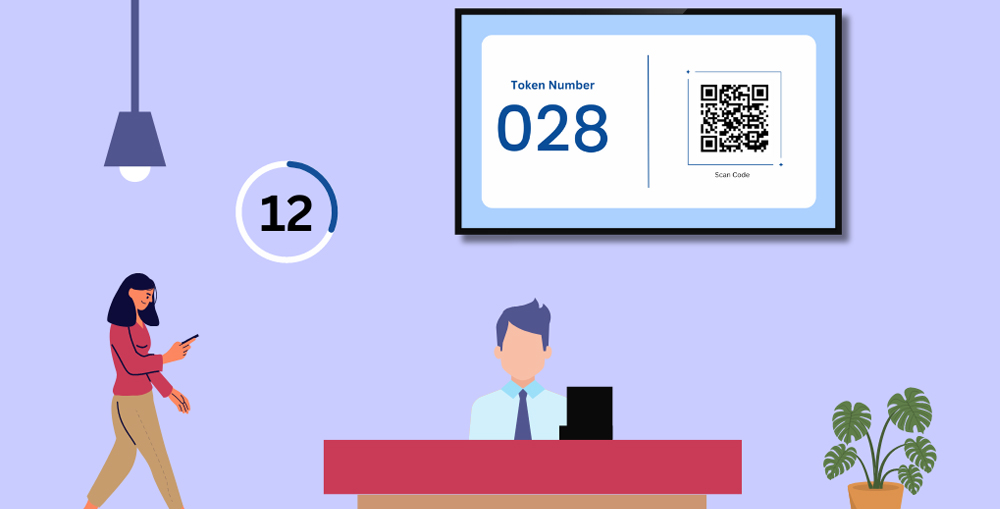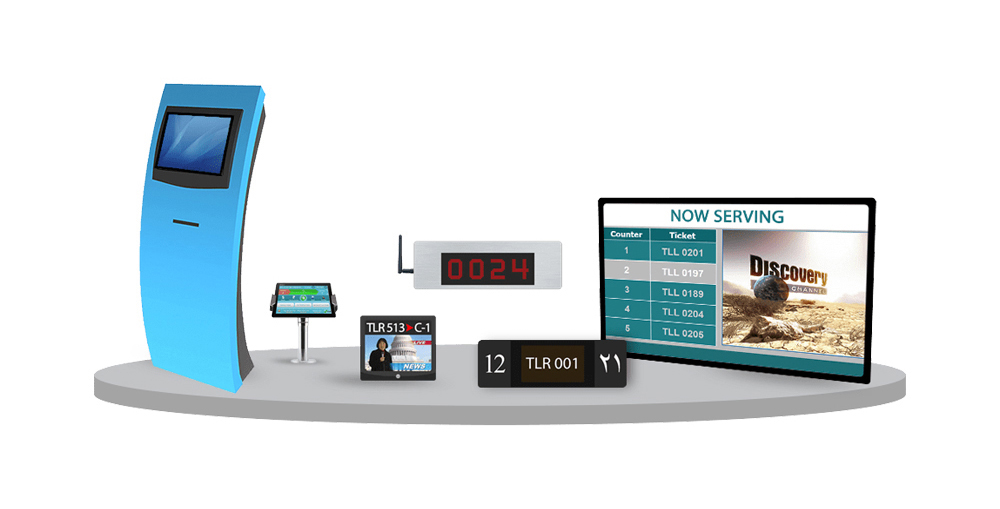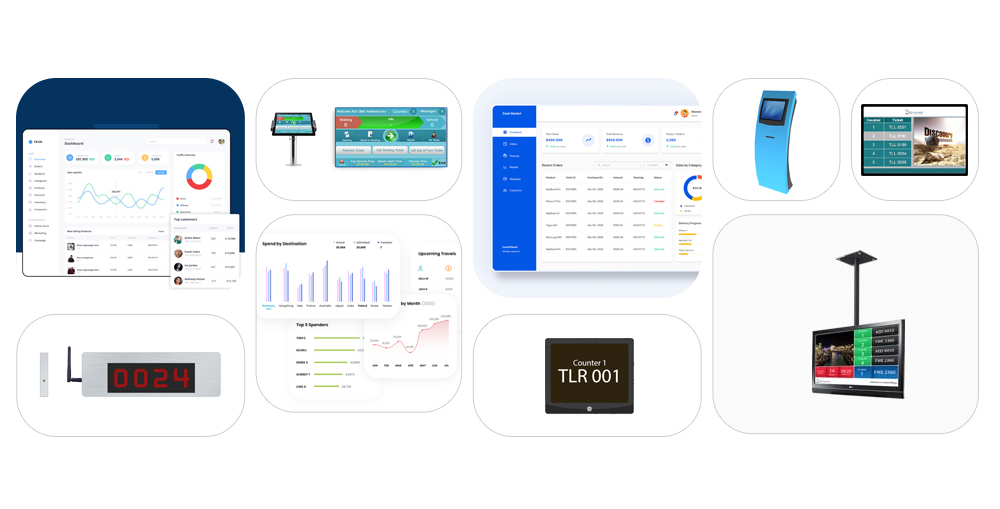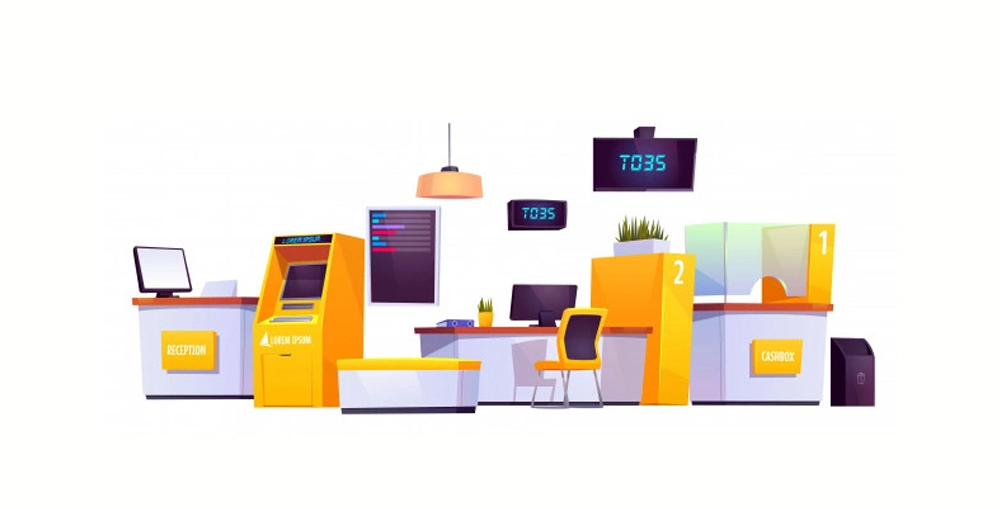With the rise of technology, ever increasing competition and rising customer demands businesses started relying on technological solutions so much so that such tools become an absolute essential. The software, tools and solutions which support various operational processes have gained huge momentum over the past two decades and transformed into a huge industry over the time. A queue management system is one of such solution. Especially when it comes to service sector the customer facing environments require an effective and efficient customer flow management system. Banks operating in Dubai, Sharjah, Abu Dhabi and all around the UAE are considered to be pioneer of various innovative technological solutions in the region. A bank branch is typically a very busy service center, during peak hours the crowd formation and slow customer flow and unhappy customers are a common sighting.
A queue management system is a sophisticated high-tech solution which is designed to optimize customer flow, monitor and manage customer journey and boost branch efficiency. A queue management system not only benefits customers but it also enhance branch efficiency by significantly improving staff performance. It offers several features which digitalize several customer journey process, the digitalization and automation help boosting performance. In this blog we will discuss how a queue management system can greatly enhance customer experience while optimizing staff performance and boosting bank branch’s efficiency.

Why Customer Experience is So Important in Banking Sector?
The customer experience is the perception a customer made during and after interacting with a business. Banking sector is one of the most competitive markets, the competition is tougher and the customer demands keep getting higher and higher. Along with that, new trends, emerging technologies and customer preferences are also driving factors for innovation and integration of technology in the banking sector. In such circumstances, a good customer experience help elevating customer loyalty and brand advocacy, which help banks maintaining a steady and sustainable growth. The customer experience and customer satisfaction is crucial for banks. As here in Dubai, Sharjah, Abu Dhabi and other regions of the UAE, there are several banks, and it is relatively easier to switch, a bad experience can compel your customers to switch to a competitors immediately.
A queue management system is a sophisticated technological solution which help banks in streamlining customer flow, minimizing customer wait time, and boosting branch efficiency. A queue management system provides a complete framework to enhance and manage entire customer journey, which makes it ideal as a branch transformation tool. Banks can greatly enhance customer experience by providing them digital queuing, interactive experience and less wait time. It makes customer journey frictionless and also offer various administrative and management features. Banks can easily setup a centralized queue management system where they can connect all the branches and get real-time data from all of them. These features and several other queue management system benefits can be a game-changer for the banking sector.
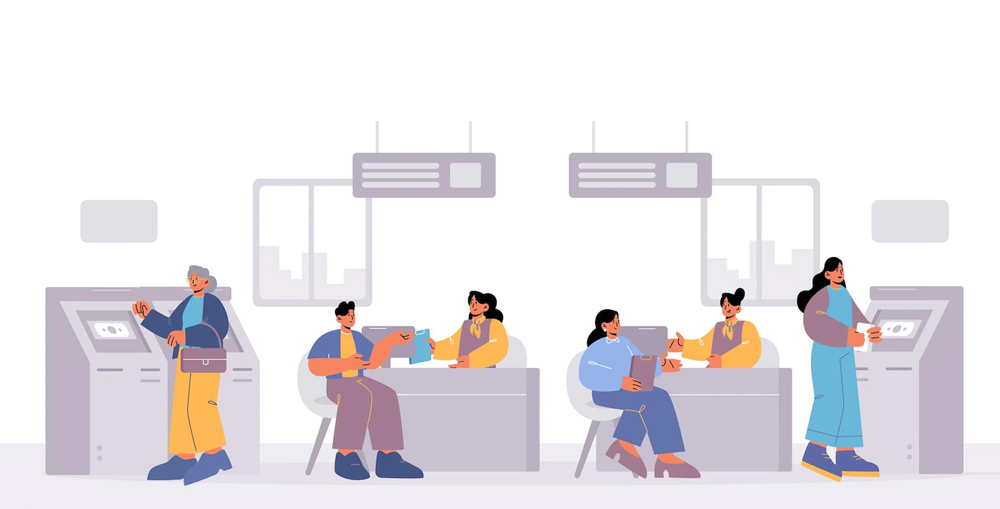
Why Queue Management System is Essential for Banking Sector?
A queue management system has become an essential tool for modern day banking sector. The customer flow is always challenging in banking setups. The customer footfall is large, and during peak hours it could become huge, resulting is slow moving queues, congestion and even crowd formation at the branches. There are several other challenges such as unpredictable customer influx, different service complexities, and most of the times the bank branches have limited physical space as well. All these factors can worsen the customer flow and result in unhappy customers. According to several researches and market studies on an average a customer can wait for 9 to 12 minutes maximum, depends on the industry, any more time longer than that could hinder their experience. Therefore the banks need a digital queue management system to streamline customer flow and to prevent crowd formation.
A queue management system manages customer flow with autonomous tools, it digitalize and automate several processes and make queuing more efficient and effective. Furthermore the queue management systems automatically manages customer flow for several different sets of customers with different queuing polices and priority levels. It can record and analyze the customer flow, and provide predictive analysis which help bank branch managers to prepare beforehand and efficiently deploy resources. The queue management system keeps customers engage during the waiting and enhance waiting experience. It also provides queuing updates and keep customers engaged to minimize the perceived wait time. The queue management system can greatly reduce the staff workload, enabling them to focus on their primary and more productive tasks, resulting in high quality service and great operational efficiency, all these features makes queue management system an essential tool for banking sector.
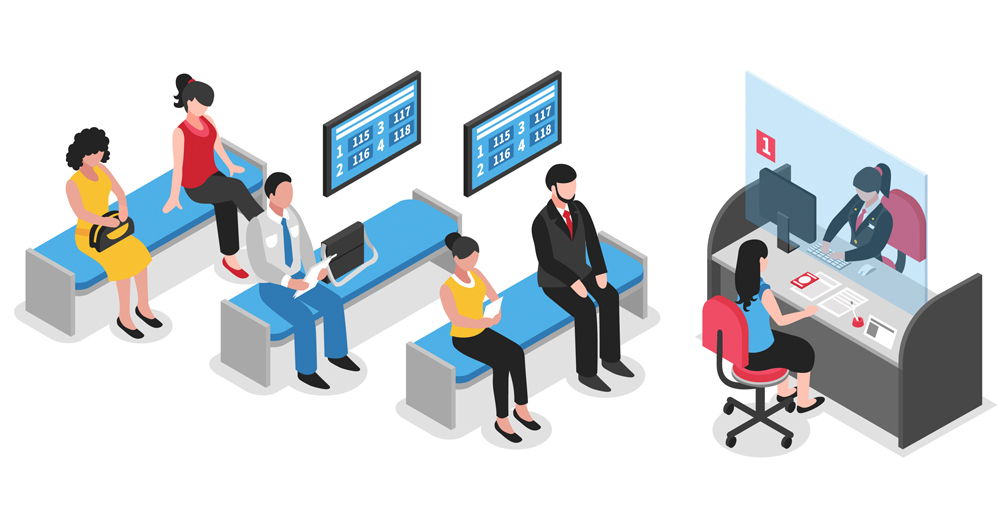
How Queue Management System Enhance Customer Experience in Banking Sector?
A queue management system is a digital solution which consists of modern technology including both software and hardware components. The queue management system software is based on powerful smart algorithms and AI (artificial intelligence) which not only enable automation but also enable queue management system to collect and analyze queuing data in real-time and take decisions to optimize the customer flow and efficiency. Here are the most common components of a queue management system for a bank branch:
- Virtual Ticketing System: Virtual ticketing system is a modern form of digital ticketing system, it enable customers to remotely sign-up for the queues without even physically being present at the bank. Multiple communication methods such as SMS, Email, Online Portals, Mobile Apps, WhatsApp, etc. can be integrated to facilitate customer sign-up process.
- Self-Service Kiosk: An interactive self-service kiosk is one of the most widely used component of a queue management system. It welcomes customers and allow them to sign-in to the queues. The self-service ticket dispensing kiosk can also collect required information from the customers to put them in the right virtual queue.
- Appoint Booking Module: The appointment booking module is an integrated tool, it provides customers features to schedule their appointment. They can chose the service they need and the system can provide them relevant information such as the available time slots, the average expected wait time and footfall, etc. All such information facilitate appointment booking process.
- Digital Signage Screens: The digital signage screens are large displays carefully installed at strategic locations within the bank branch. These signage displays show live queuing data which helps keeping customer engaged and can also be used for customer calling. Furthermore banks can also use these signage to play promotional and marketing content.
- Audio Announcement System: The speakers are also placed at strategic places, the in-built sound system is used to make announcements and for customer calling. A pleasant music alert/tone is followed by a multi-lingual announcement, calling customers to approach to the designated counter. It is a great tool to increase customer engagement.
- Queue Management System Software: A queue management system software is a server-side application which is hosted on an online server, at cloud or on-premises server. It is connected with all the branches and various user interfaces. There are personalized UIs for customers, service agents and management dashboards with exclusive features.
These are the basic components of a modern queue management system for the banks. Furthermore every business has its own unique needs and workflows that is why the queue management system also offers customization. The customization enable banks and other businesses to have a tailor-made queue management system that suits their requirements better.

A queue management system offers several advantages which can be very beneficial for banks. Especially when it comes to customer experience management, a queue management system is an ideal solution. Here are some key benefits of a queue management system that enhance customer experience, raise customer satisfaction and boost bank branch operational performance:
Queue Management in Banking: Reduce Customer Wait Time
The customer wait time has profound impact on customer experience, no matter how good your services are or how well-trained your service agents are, if your customers have to wait longer, they will leave unhappy. A queue management system digitalize the sign-up process, it reduce the friction by eliminating all manual queuing problems and optimize service quality. Automated customer flow management help reducing the wait time, it automatically route customers to the right counter with least wait time. Furthermore a queue management system can also automatically optimize customer journey by understanding customer service complexity, current customer flow, and service time at each counter. The smart queue management system software helps optimizing the entire customer journey, raising customer satisfaction and happiness.

Queue Management in Banking: Improve Customer Flow
A queue management system automates several customer journey processes which elevate customer experience. A queue management system also allow banks and businesses to implement their queuing polices more effectively. It can identify customers, refer to their right service counter. And during the time customers and waiting in the waiting area, the queue management system can automatically reroute the customer to fast moving tracks to ensure optimum customer flow. Since everything is automatically controlled, the customer flow is efficient and it also help reducing the wait time.

Queue Management in Banking: Personalized Customer Experience
Personalized customer interaction helps banks getting connected with their customers and also elevate customer experience. A queue management system can be integrated with customer database, it can identify customer, and offer them personalized options, that align with their preference and previous service history. Furthermore the queue management system also enhance communication, by using various means and mediums to provide updated queuing information. The smartphone apps, and online portals can also be used to enable one-on-one communication with the service agent. All such features help elevating customer experience and add raise customer satisfaction.

Queue Management in Banking: Boost Staff Performance
High-performing staff at any bank branch can result is higher customer satisfaction and better operational efficiency. With traditional or manual queuing methods, the staff has to engage a lot with waiting customers solving several problems, which hinder their performance. With a digital queue management system in place, all such tasks are digitalized and automated, which reduce a lot of workload of the staff. On top of that a queue management system can also help service agents with pre and post-service tasks and it can also monitor several staff performance KPIs. All these features help boosting staff performance and result in higher operational efficiency.

Queue Management in Banking: Business Intelligence Data
One of the great advantage of implementing a queue management system is that it can collect and provide a wide variety of business intelligence data. This data provides deep insight to customer behavior, trends, and customer footfall. Banks can collect analytical and statistical data from every touch point of the customer journey, along with data on customer wait time, customer flow, and service agents’ performance. The bank branch managers and the head office can integrate this data in their decision making process to make more informed decisions and they can also utilize this data for predictive analysis and better manage their human resource for higher efficiency. Furthermore the queue management system can also collect customer feedback data which is also very helpful.

Queue Management in Banking: Third-Party System Integration
The queue management system is a very advanced solution it can be integrated with third-party tools, software, applications, customer databases, and central information system of the bank. This provides several advantages and also enable organizations to incorporate innovative features. The third-party system integration also help banks to connect their queue management system with their ERP, CRM, Feedback System, Online Customer Portals, and various other tools. The queue management system’s data can also be integrated and provided in a main application or organization’s operating system to help management get the real-time insights and updates which help them with several administrative tasks. The queue management system can also be integrated with SMS and email gateway along with several other systems to streamline the communication.

All these features of a queue management system help banks and other businesses to enhance customer experience and optimize branch performance.
Conclusion
The queue management systems are evolving rapidly, over the past few years the queue management system has become an essential tool for customer facing environments. Similarly for banks, an effective and efficient queue management system is essential. As the customer expectations and the competition continues to increase, the banks need a highly effective and flexible queuing solution which can not only streamline their operations but also help them with emerging needs. Banks can leverage the digitalization and automation to boost the performance of several internal processes which help them enhance customer flow. With the ability to get real-time updates, analytical data, and third-party system integration banks can gather valuable insight which can be integrated in decision making processes to ensure sound and informed strategic decisions are made which elevate customer experience.
Banks can analyze the customer behavior, the service pattern, staff performance and various other data to make adjustments and to identify areas of improvements which eventually results in improved customer experience and higher customer satisfaction. A queue management system is a very flexible tool which offers tons of customizations and tailor-made solutions that perfectly match with your business needs further amplifying the impact of the system and resulting in better efficiency. In this blog we discussed how a queue management system can elevate customer experience for banking sector, if you want to implement a customized queue management system or if you want to learn more about the subject, please feel free to contact us through our Contact Us page or leave a comment in the comment box below and we will get in touch with you soon.
